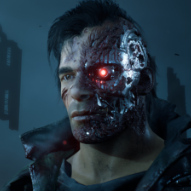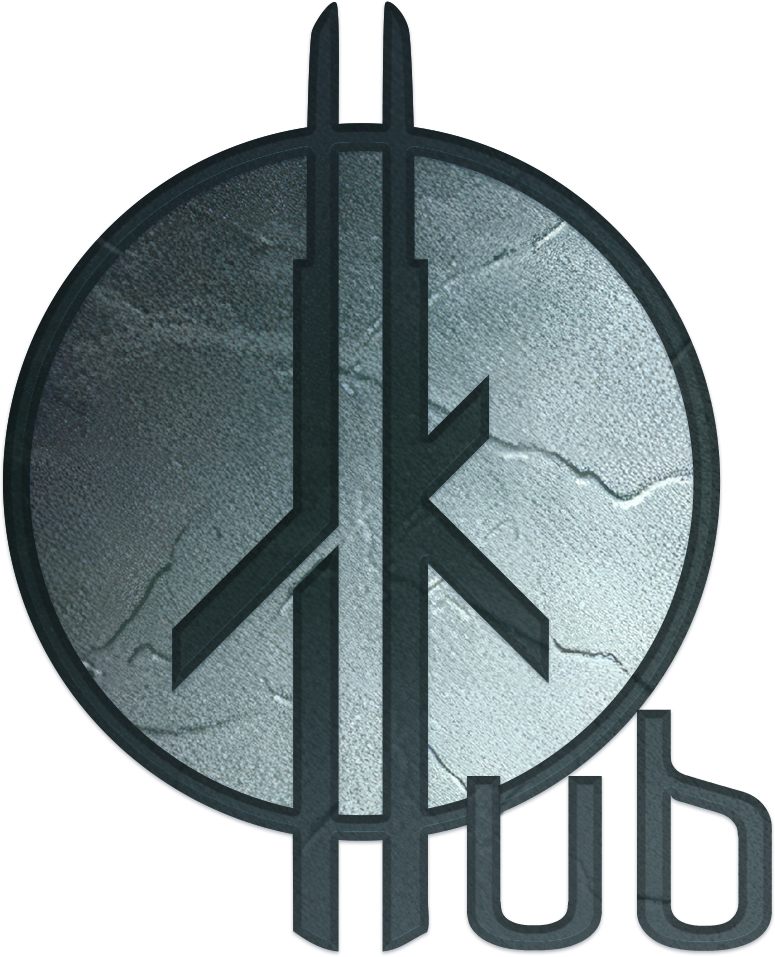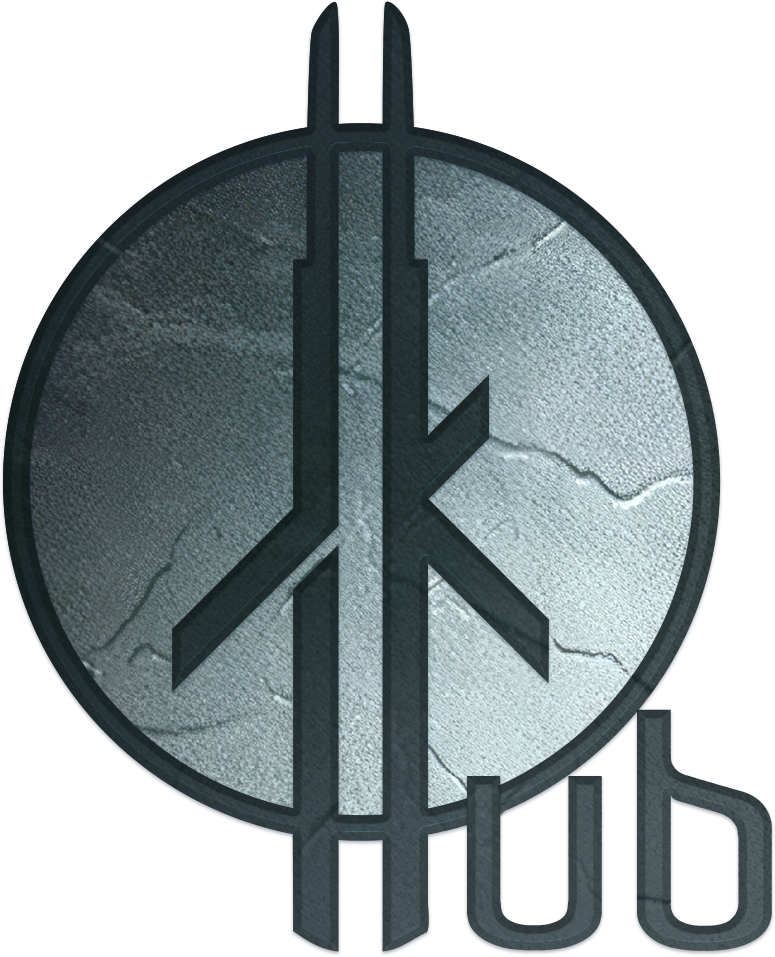-
Posts
4,085 -
Joined
-
Last visited
Content Type
Profiles
News Articles
Tutorials
Forums
Downloads
Everything posted by DT.
-
Come to the PBR side, we have realism!
-
Can you elaborate on large map support?
-
Pretty sure there's already code to move the head to look at another npc. No idea if there's something in Icarus that you can use, but worth a look.
-

Any Possibility Ja Can Look Like A Modern Game?
DT. replied to Keyten's topic in Mod Requests & Suggestions
But why keep screwing with light maps? Wouldn't it be better to invest time into dynamic lighting and shadows? -
You can't animate world (player bolted) weapon models, not for how the code is set up currently anyhow.
-

The Force Awakens Conversion Mod for SP
DT. replied to GPChannel's topic in WIPs, Teasers & Releases
That's pretty good, nice job! -
Well if you're willing to do a high poly bake and make a PBR version, we would be happy to use it in DF2 mod.
-
Are you going to do a high poly bake?
-

Bodies Has Hitscan - Only Works With Lightsabers
DT. replied to Langerd's topic in Coding and Scripts
Instead of missile->dflags = DAMAGE_DEATH_KNOCKBACK; missile->dflags = DAMAGE_DISMEMBER; Do: missile->dflags = DAMAGE_DEATH_KNOCKBACK | DAMAGE_DISMEMBER; -
So will you be using a different format instead of ghoul2?
-

Any Possibility Ja Can Look Like A Modern Game?
DT. replied to Keyten's topic in Mod Requests & Suggestions
Ssao is shit in rend2, its disabled by default. -
There is a walk anim I believe that isn't animated in-place, in the GLA.
-
I admit I have been on a break lately, but have felt the want to update this ent. Atm, I've tidied up the code and: - added a LOOP flag for animation. Useful for 1-frame models - added USE_SKIN flag when wanting to use skin files. If not set, will use internal texture path. - removed startframe & endframe. added ability to set the animation to play via its number in the animation table. Default 0. (experimental) I'd like to add animation.cfg anim name reading, but not too sure how yet.
-
It would be a task of modifying misc_model_breakable to load animation.cfg. Animevents on a map ent? That may be more difficult, dunno. Loading the cfgs for md3's weren't disabled, it's the fact that ghoul2 models were set to load instead of md3 as player models. Also, Jka uses a slightly different animation.cfg than q3. Jka uses anim names, q3 uses anim numbers.
-

"jedi Academy Helped Me Come Out Of The Closet"
DT. replied to Jango40's topic in Jedi Knight General Discussions
Anyone know his gaming nickname? I don't think he mentioned it. -
Model root should always be at 0,0,0
-
Misc model doesn't count because it becomes part of the bsp. Lights also don't count. I would think pretty much everything else would count.
-

What Is The Most Fun You've Had In The Jk Games?
DT. replied to Jango40's topic in Jedi Knight General Discussions
Killing Rosh. -

Porting Maps From Here To Source Engine.
DT. replied to 11Cent's topic in Jedi Knight General Discussions
See if quark can help, I think it can handle both map formats. -
I intend on porting the changes to MP once somaz is done, at least with major stuff.
-
About MTR Shaders An .MTR shader is a copy of the standard .SHADER. You only can use an .MTR shader IF there is a .SHADER shader of the same name already present, due to how it's loaded by the OpenGL 3 "rend2" renderer. This is to allow one shader (.SHADER) for the OpenGL 1 "vanilla" renderer, and a different shader (.MTR) for the OpenGL 3 "rend2" renderer. If you're only creating assets for OpenGL 3 "rend2" (which DF2 Mod only uses), then just use the .SHADER extension. Sun Shader Example ///////////////////////////////////////////////////////////////////////////////////////////////////////////////////// // // q3gl2_sun <red> <green> <blue> <intensity> <degrees> <elevation> <deviance> <shadow map scale> <ambient light scale> // // // red green blue : Color is described by three normalized RGB values. Color will be normalized to a 0.0 to // 1.0 range, so it doesn't matter what range you use. // // intensity : The brightness of the generated light. A value of 100 is a fairly bright sun. The intensity // of the light falls off with angle but not distance. // // degrees : The angle relative to the directions of the map file. A setting of 0 degrees equals east. // 90 is north, 180 is west and 270 is south. In the original version of Q3Map, non-axial values had a // tendency to produce jagged shadows. With Q3Map2, this problem is avoided with new options like lightmap // filtering, raytracing and penumbra effects. // // elevation : The distance, measured in degrees from the horizon (z value of zero in the map file). // An elevation of 0 is sunrise/sunset. An elevation of 90 is noon. // // deviance : The number of degrees for the half-shadow. General values up to 2 or 3 are acceptable. The real // sun has a solid angle of about half a degree. // // shadow map scale: range = 0.0-1.0. 0.0 = not visible, 1.0 = black shadows. // // ambient light scale: range = 0.0-1.0. // ///////////////////////////////////////////////////////////////////////////////////////////////////////////////////// // // q3gl2_tonemap <toneMapMin> <toneMapAvg> <toneMapMax <autoExposureMin> <autoExposureMax> // // // toneMapMin: Default = -8.0. Determines minimum lighting. // // toneMapAvg: Default = -2.0. Determines average lighting. // // toneMapMax: Default = 0.0. Determines maximum lighting. // // autoExposureMin: Default = -2.0. Determines minimum auto exposure. // // autoExposureMax: Default = 2.0. Determines maximum auto exposure. // ///////////////////////////////////////////////////////////////////////////////////////////////////////////////////// textures/skies/df2_katarn { qer_editorimage textures/skies/sky surfaceparm sky surfaceparm nomarks surfaceparm noimpact surfaceparm nolightmap q3gl2_sun 1.00 0.89 0.81 500 250 75 3 0.5 0.3 q3gl2_tonemap -8.0 -2.0 0.0 0.0 0.75 q3map_nolightmap skyParms textures/skies/sulon 512 - } . . Liquid Shader Example ///////////////////////////////////////////////////////////////////////////////////////////////////////////////////// // // liquid <color rgb > <fog color rgb> <height> <choppy> <speed> <frequency> <depth> // // // color: Set the waves color. // // fog color: Set the fog color. Use this to adjust the base color of the water. // // height: Set how intense the water's parallax effect is. // // choppy: Set how choppy the water is. // // speed: Set the speed of the water effects. // // frequency: Set the frequency of the water effects. // // depth: Range = 0.0 - 1.0. Set the fog density inside the water. 0.0 is not dense, 1.0 is dense. // ///////////////////////////////////////////////////////////////////////////////////////////////////////////////////// textures/DF2_water/water { qer_editorimage textures/system/water qer_trans 0.8 // transparency in Radiant surfaceparm nonsolid // surface is non solid surfaceparm nonopaque // surface is transparent surfaceparm trans // surface is transparent 2 surfaceparm water // water characteristics surfaceparm nomarks // water characteristics q3map_material Water // water characteristics 2 //liquid <color rgb> <fog color rgb> <height> <choppy> <speed> <frequency> <depth> liquid .80 .90 .60 .10 .19 .22 0.9 1.5 60 6.56 .3 }. . Texture Workflows There are two workflows for you to choose from: 1) Gloss - Uses diffuse map, + normal map + specular (RGB = specular, A = gloss) 2) Roughness - Uses albedo map + normal map + RMO (R = roughness, G = metalness, B = ambient occlusion) Use one workflow per stage - you cannot combine them in the same stage. You can for example, use the Gloss Workflow for shader stage 1 and use the Roughness Workflow for shader stage 2 just fine though. Workflow Roughness Size restrictions: RMO & Albedo textures must be the same size. See example below. Yes - Albedo = 1024x1024, Normal = 1024x1024, RMO = 1024x1024 No - Albedo = 1024x1024, Normal = 1024x1024, RMO = 512x512 Normal Map Setting: You can add a setting below your "normalMap" or "normalHeightMap" line to flip either the red or green channels of the normal map. You can also use this to increase the intensity of your normal map. Default setting is "normalScale 1 1". Examples: normalScale 1 -1 - this will invert the green channel, while leaving the red channel alone. normalScale 2 1 - this will increase the red channel's intensity, while leaving the green channel alone. normalScale -2 1 - this will invert the red channel and increase its intensity, while leaving the green channel alone. Glass Shader Example This shader will give you a transparent image, with cubemap reflections. This shader expects the use of TGA. You must use a "lightmap" in your shader, otherwise your glass will not display properly. Using the "roughness" workflow, the albedo texture's alpha channel contains the opacity: textures/DF2_glass/glass1 { qer_trans 0.5 { map textures/DF2_glass/glass1 blendFunc GL_ONE_MINUS_SRC_ALPHA GL_SRC_ALPHA normalMap textures/DF2_glass/glass1_N normalScale 1 -1 rmoMap textures/DF2_glass/glass1_RMO } { map $lightmap blendFunc GL_DST_COLOR GL_ZERO } } . Using the "gloss" workflow, the diffuse texture's alpha channel contains the opacity: textures/DF2_glass/glass1 { qer_trans 0.5 { map textures/DF2_glass/glass1 blendFunc GL_ONE_MINUS_SRC_ALPHA GL_SRC_ALPHA normalMap textures/DF2_glass/glass1_N normalScale 1 -1 specularMap textures/DF2_glass/glass1_SPEC } { map $lightmap blendFunc GL_DST_COLOR GL_ZERO } } . . Level & Model Texture Shader Examples: Normal (no height) Shader: Workflow Gloss: Diffuse, Normal, Specular, Lightmap. textures/DF2_cargo/wall_6 { { map textures/DF2_cargo/wall_6 normalMap textures/DF2_cargo/wall_6_n specularMap textures/DF2_cargo/wall_6_spec } { map $lightmap blendFunc GL_DST_COLOR GL_ZERO } }. Workflow Roughness: Albedo, Normal, RMO, Lightmap. textures/DF2_cargo/wall_6 { { map textures/DF2_cargo/wall_6 normalMap textures/DF2_cargo/wall_6_n rmoMap textures/DF2_cargo/wall_6_RMO } { map $lightmap blendFunc GL_DST_COLOR GL_ZERO } } . . Normal + Height Shader: Workflow Gloss: Diffuse, Normal + Height, Specular, Lightmap. textures/DF2_cargo/wall_6 { { map textures/DF2_cargo/wall_6 normalHeightMap textures/DF2_cargo/wall_6_nh specularMap textures/DF2_cargo/wall_6_spec } { map $lightmap blendFunc GL_DST_COLOR GL_ZERO } }. Workflow Roughness: Albedo, Normal + Height, RMO, Lightmap. textures/DF2_cargo/wall_6 { { map textures/DF2_cargo/wall_6 normalHeightMap textures/DF2_cargo/wall_6_nh rmoMap textures/DF2_cargo/wall_6_RMO } { map $lightmap blendFunc GL_DST_COLOR GL_ZERO } }. . Model Shader: Workflow Gloss: Diffuse, Normal, Specular. models/players/kyle/torso { { map models/players/kyle/torso rgbGen lightingdiffuse normalMap models/players/kyle/torso_n specularMap models/players/kyle/torso_spec } }. Workflow Roughness: Albedo, Normal, RMO. models/players/kyle/torso { { map models/players/kyle/torso rgbGen lightingdiffuse normalMap models/players/kyle/torso_n rmoMap models/players/kyle/torso_RMO } }
-
Screw that, make the maps properly with models. If the saber project works out, I intend on making a Clone of it with Star Wars assets.
-
Even so, we could still share assets and maybe some blueprints/code.
-
Those assets are obsolete in a modern engine that uses PBR, anyway. Eridan Crisis and the open saber project teams should collaborate seeing as they are both on UE4.
-

My latest obsession: ROTJ Throne Room Duel SP
DT. replied to therfiles's topic in WIPs, Teasers & Releases
Nice job! Just an FYI - give credits to Toshi as well for Luke, as I just did a tweak.



